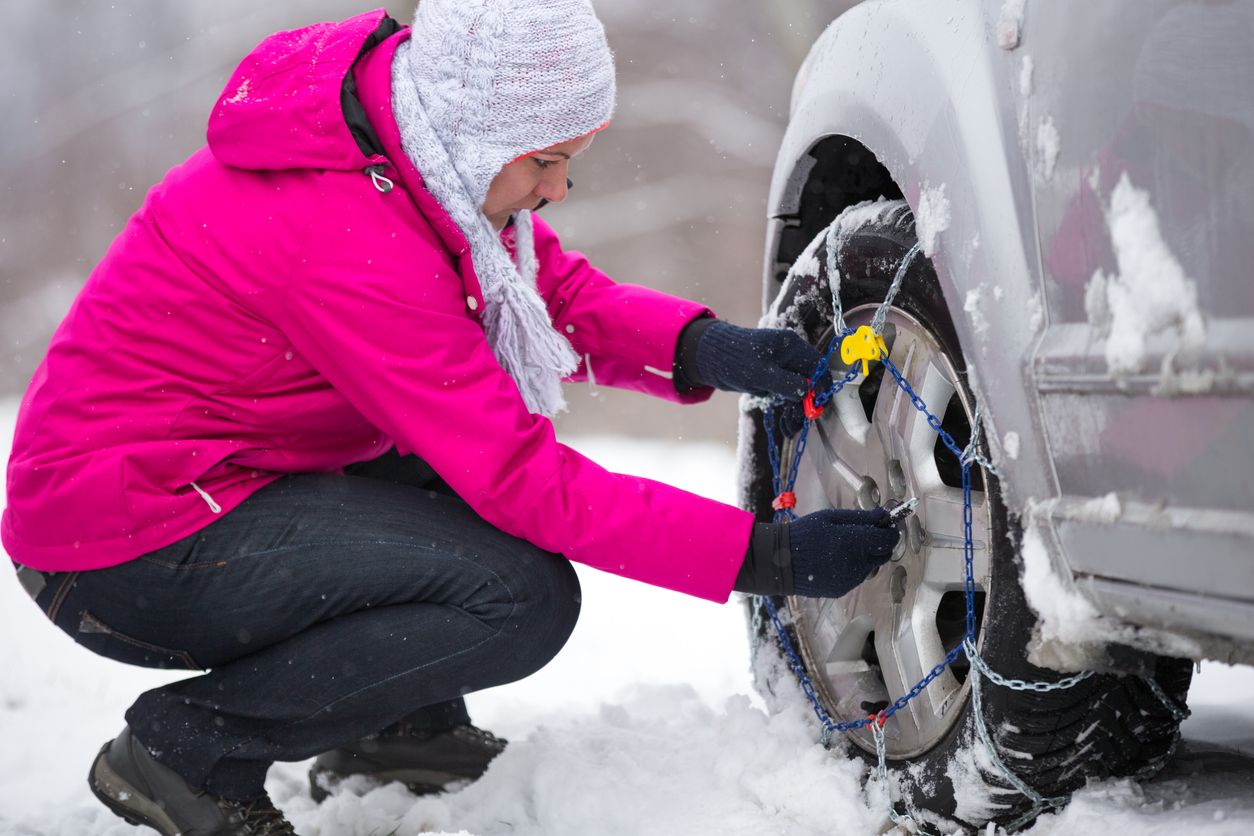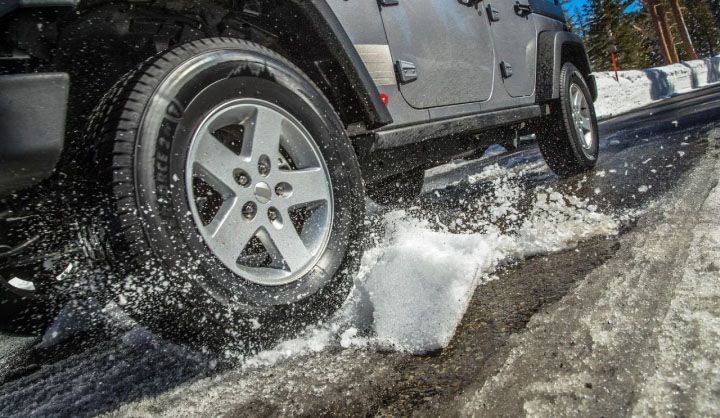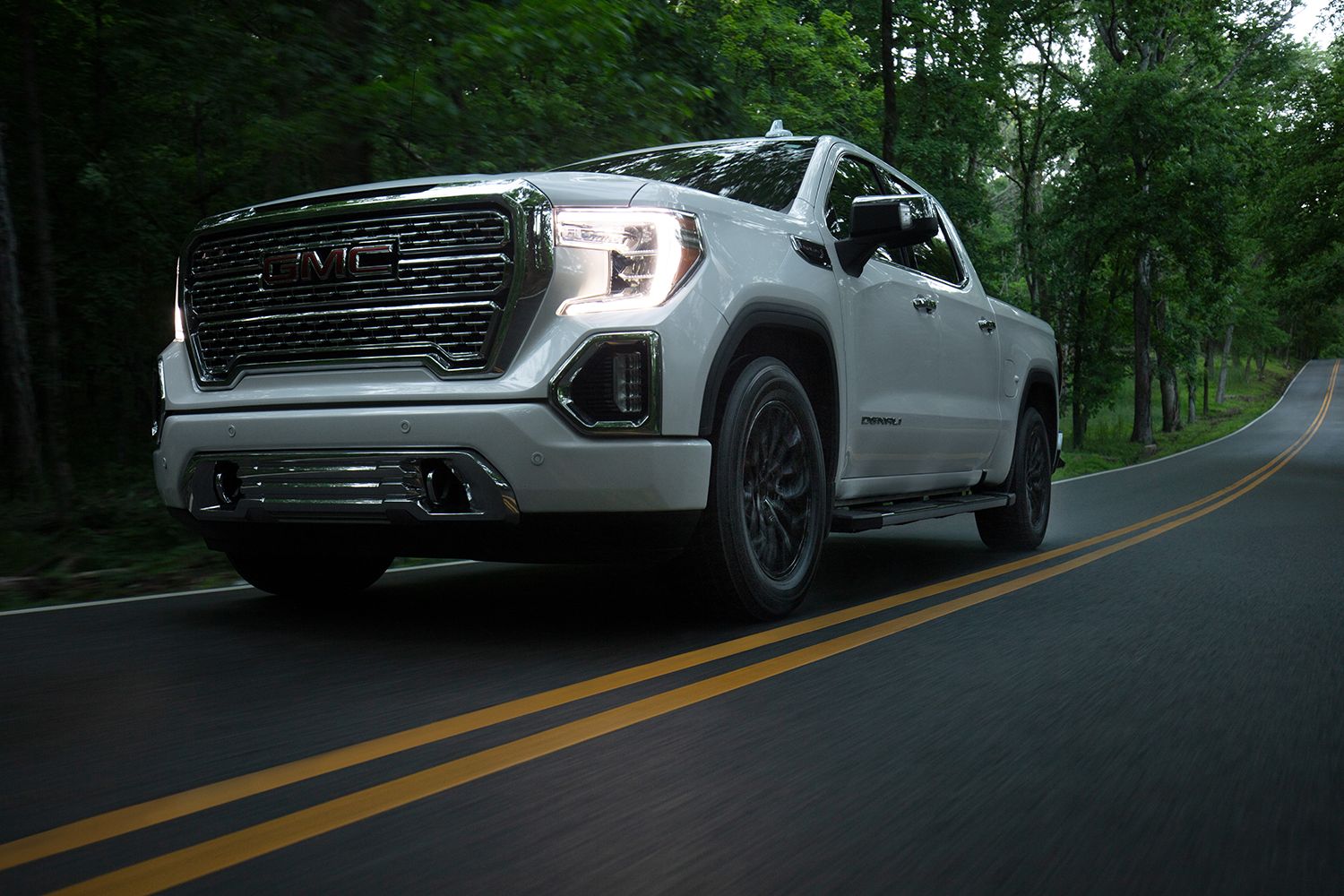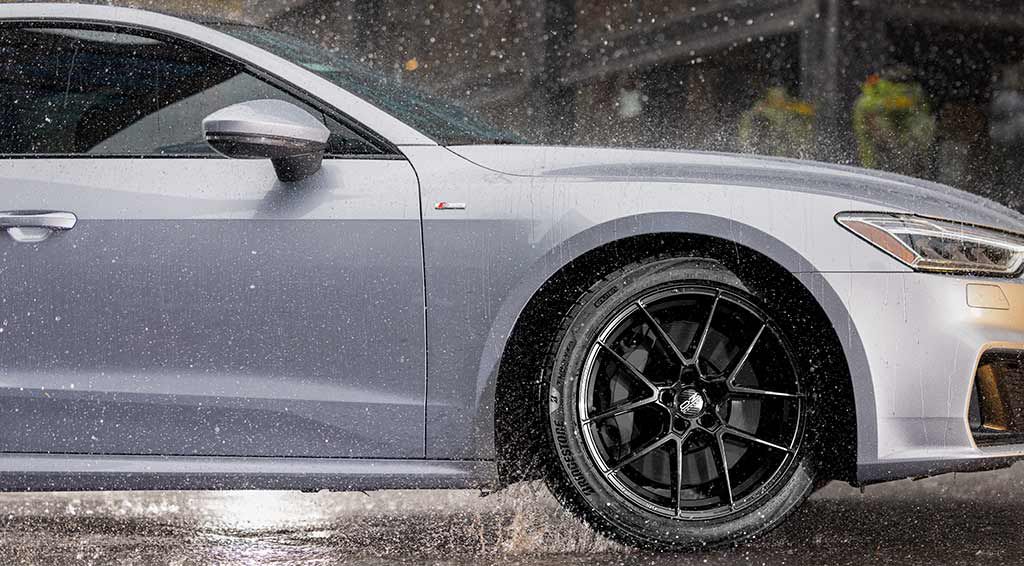As winter approaches, it’s time to think about winter driving. Whether you’re headed across the country for a ski vacation or over the mountain and through the woods for quality time with family, staying safe through unpredictable conditions is a must. Sometimes, that means using snow chains and snow tires. This guide will help you understand what type of traction you need, how to use snow chains effectively, and more.
What Are Snow Chains Used For?
Snow chains are nets made of small chains that attach to your tires to add traction in severe winter conditions. As the vehicle's weight rolls onto the chains, they dig into the snow and ice, adding grip. This helps maintain control while driving at slow speeds on slippery roads.
These chains are often mandatory for tractor-trailers and other commercial vehicles traveling through mountainous areas. In extreme weather, local laws may also require passenger vehicles to use snow chains.
Snow Chains vs Snow Tires
Snow chains can be beneficial for temporary use, such as going over a snowy mountain pass or driving during a storm. However, they aren’t always the best choice. Many manufacturers don’t recommend driving above 30 mph with snow chains installed, so they aren’t ideal for everyday use on passenger vehicles. If you drive with them on dry roads, they can also damage your tires or car. However, if you run into particularly deep snow or encounter an area that has implemented traction laws requiring chain use, they can be extremely helpful (or even legally required) to have in your vehicle.
On the other hand, snow tires like Bridgestone Blizzak tires are mounted on your wheels in place of your standard summer or all-season tires. Snow tires are designed to give you more traction in frigid conditions and to help route snow and ice out of your tires. If you live in an area with snowy winters and routinely drive in snow and ice, especially at highway speeds, then snow tires may be a better fit for your lifestyle. Snow tires also have the benefit of being on your vehicle permanently, so you don’t have to worry about taking them on and off.
Note: In some instances, simply having snow tires may not be sufficient to comply with local laws, especially during storms. You may also need to have snow chains in the vehicle ready to use if required. Always check the laws of areas you’ll be driving before setting out!
Do You Need Snow Chains on All Four Tires?
Generally, you want to maximize traction by using snow chains on all four tires. However, if you only use them on two tires, ensure they are the drive tires. In other words, if you have a front wheel drive vehicle, install the chains on the front tires. If you have a rear wheel drive vehicle, install the chains on your rear tires. If you have an all-wheel drive or four-wheel drive vehicle, consult your owner’s manual, as snow chains may not be recommended.
How Do You Put Snow Chains on Tires?
Before you hit the road, read up on local traction laws for the area where you’re traveling. Then, practice installing your tire chains – pulling off on the side of the road during a snowstorm to install your chains can be challenging, and even more so if you’ve never done it before! If your chains have been packed up since last winter, you should also check them for rust or damage at the beginning of the winter.
Note: There are many different types of snow chains. For specific directions, consult the instruction manual on your snow chains.
- If you’re on the road, pull off as far as possible without getting stuck. Turn on your hazard lights and bundle up! Make sure to put your vehicle in park and engage the emergency brake before leaving the car.
- Lay your chains flat and straighten out any twists or tangles.
- Drape the chain over the tire, starting from the top and letting it fall evenly on both sides. Ensure the chain’s hook side is facing outward to prevent tire damage.
- Hook the chains together at the top, then connect them at the back of the tire.
- Drive your vehicle forward to expose the tire section that does not have a chain attached yet. Turn your wheel so that the tire points towards the inside of the car so you can easily access the whole tire. Be sure to put your vehicle in park and engage the parking brake before getting back out.
- Connect the chains together to cover the rest of the tire. If your snow chains include tensioners, use those to ensure the chains are secure.
- Ensure your chains are aligned with the tires and hanging straight.
- Repeat with the remaining tires.
- Slowly drive 50-100 feet to allow the chains to shift and settle, then stop and re-tighten them.
- You’re good to go – keep reading to learn how to drive safely with snow chains installed!
Tips for Driving With Snow Chains
Driving with snow chains is different from driving without them. These tips will help you make the most of driving with snow chains installed.
- Take it slow: Driving under 30 miles per hour will help you maintain control and avoid damage to your vehicle or tires.
- Avoid rapid maneuvers: Slamming on the brakes, rapid acceleration, and making sudden, sharp turns can damage your chains or cause you to lose control on slippery roads.
- Stick to snowy roads: Driving with snow chains on dry roads can damage your tires, chains, and the road. Once the road becomes clear, pull over to remove your snow chains.
Frequently Asked Questions
When should I use snow chains?
It’s essential only to use snow chains on snowy and icy roads.
Can snow chains damage tires?
Snow chains can damage tires if you drive too fast, misuse them, install them incorrectly, or drive with them on dry roads.
Can you put snow chains on any car?
Some manufacturers may not recommend using snow chains. Check your owner's manual for recommendations specific to your vehicle. If you can’t use snow chains, winter tires such as Firestone Winterforce tires may be the best bet for your winter adventures!
Do I need snow chains if I have all-wheel drive?
Having all-wheel drive doesn’t necessarily mean you can skip snow chains, especially if you’re not using winter tires. Check your vehicle’s owner’s manual to see if you can use snow chains. If you have snow tires and all-wheel drive, it may mean you can drive without snow chains, but consult your local regulations.
Do you need chains with snow tires?
In some instances, you can drive without chains if you have snow tires. Check your local regulations for specific laws regarding traction requirements.
Firestone Complete Auto Care Has Winter Tires and More
With the right snow chains or snow tires, you can stay safe on the road in various conditions. Luckily, Firestone Complete Auto Care offers professional tire installation services you can trust. We'll even help you find the best tire for your ride, whether that's Firestone Winterforce Tires or not. Don’t wait until the first snowfall—schedule an appointment at your nearest Firestone Complete Auto Care to get your vehicle ready for winter today!



